Why has gold skyrocketed? What signals have been released by the foreign exchange market behind the long short game of crude oil!
During the trading session on Friday (November 29th), global markets continued to digest the liquidity impact brought by the Thanksgiving holiday, while paying attention to macroeconomic data and geopolitical developments. The US dollar index has slightly declined, the Japanese yen has performed strongly, precious metal prices have rebounded, and the crude oil market continues to be under pressure due to adjustments in supply and demand prospects. The global bond market has also experienced significant fluctuations due to changes in policy expectations. The following is an analysis and market outlook for today's major assets.
Crude oil: loosening supply and demand expectations drag down oil prices
Brent crude oil and US crude oil traded at $72.22 per barrel and $68.44 per barrel, respectively, with intraday declines of 0.63% and 0.42%, respectively. Although the situation in the Middle East has slightly eased, the reassessment of supply and demand prospects and the news of the OPEC+meeting being postponed to December 5th are jointly putting pressure on oil prices.
The ceasefire agreement between Israel and Hezbollah in Lebanon has reduced the risk of supply disruptions in the short term and lowered the risk premium in the oil market. In addition, the International Energy Agency predicts that there will be a daily surplus of over one million barrels of crude oil supply and demand worldwide by 2025, which will significantly suppress oil prices. Although OPEC+may continue its production reduction policy, well-known institutions have lowered their Brent oil price expectations for 2025 to $76, indicating that market concerns about long-term demand are intensifying.
US crude oil inventories unexpectedly fell by 1.8 million barrels, exceeding market expectations, which supported short-term oil prices. However, the shortened trading hours during holidays and investors' adjustments to year-end asset allocation may limit the room for oil price rebound.
In the coming days, investors need to closely monitor the results of the OPEC+meeting and its adjustments to the production reduction policy, as oil prices may still maintain a weak and volatile pattern in the short term.
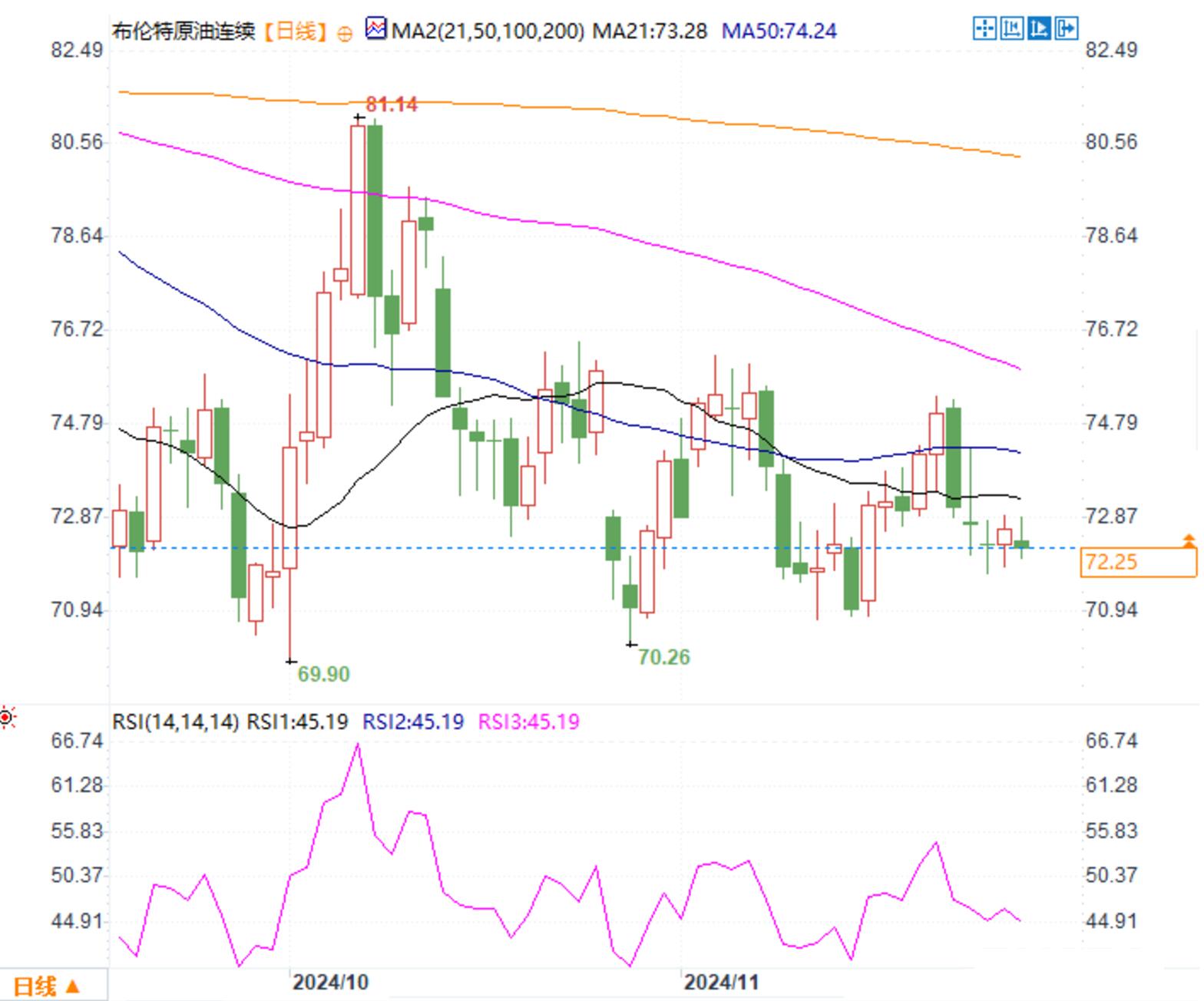
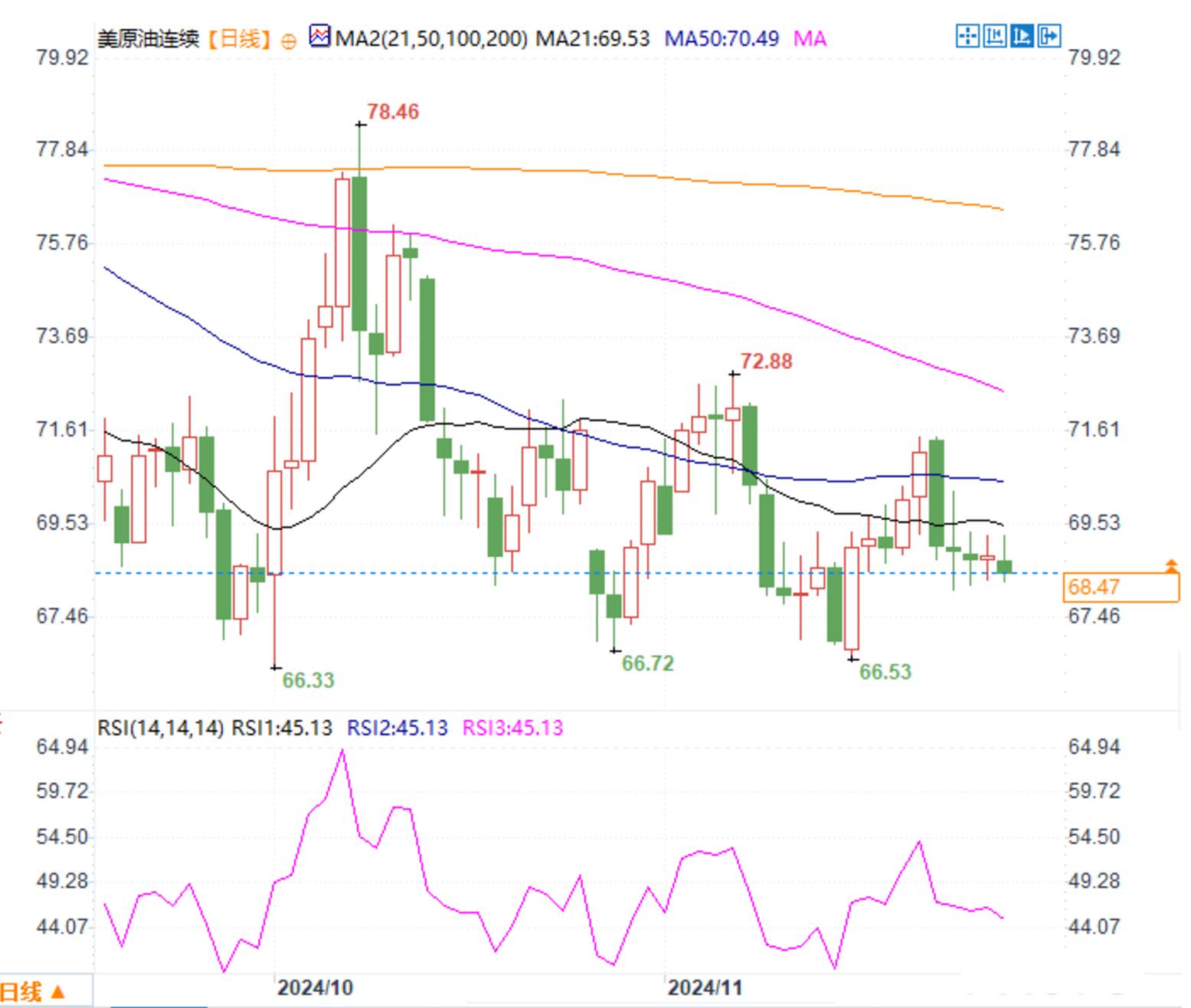
Precious Metals: The decline of the US dollar drives the rebound of gold prices
Spot gold rose 0.91% intraday to $2661.54 per ounce, but fell nearly 3% overall in November, recording its worst monthly performance since September 2023. Silver, platinum, and palladium prices have also shown a similar downward trend. This trend is mainly attributed to the strengthening of the US dollar this month due to Trump's victory and policy expectations, which has put pressure on precious metals.
However, on Friday, the US dollar index fell to 105.9182, a two-week low, pushing gold back slightly. The market's concerns about Trump's upcoming high tariffs and fiscal stimulus policies, as well as the resurgence of risk aversion, may continue to provide support for precious metals. In addition, the decline in global bond market yields and potential uncertainty in geopolitical situations may further support gold's performance before the end of the year.
In the short term, gold prices may be subject to fluctuations in the US dollar and changes in market risk sentiment, but in the medium to long term, attention still needs to be paid to global policy prospects and changes in real interest rates.
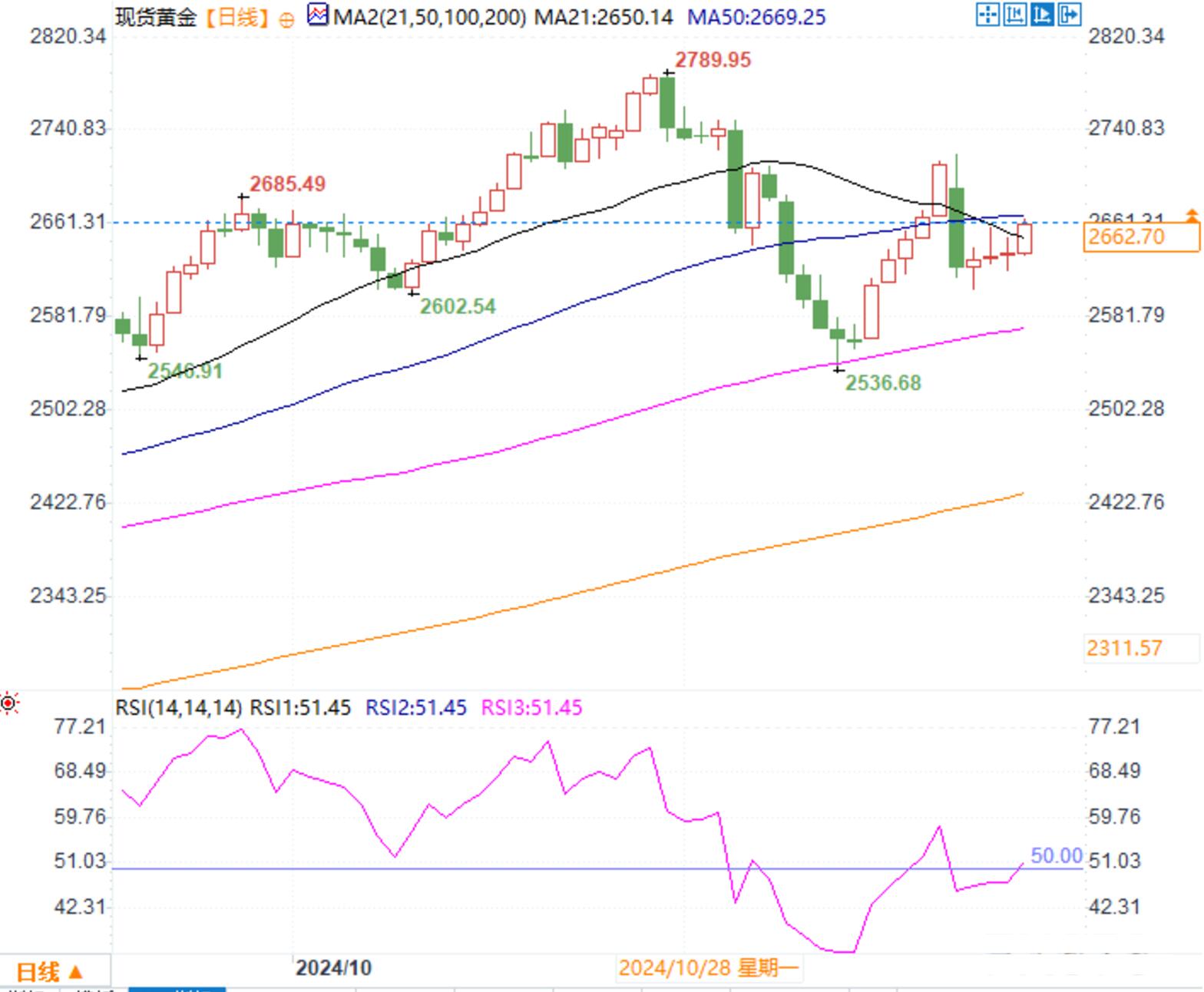
Foreign exchange market: Japanese yen performs well, Euro rebounds technically
The USD/JPY fell 1.07% to 149.880, hitting a six week low. Tokyo's core CPI rose 2.2% year-on-year, exceeding market expectations and boosting bets that the Bank of Japan may raise interest rates in December. The market currently believes that the probability of the Bank of Japan raising interest rates by 25 basis points is about 60%, which has driven the yen to rise strongly for several consecutive days. In addition, the US holiday has led to light trading, further increasing the upward momentum of the yen.
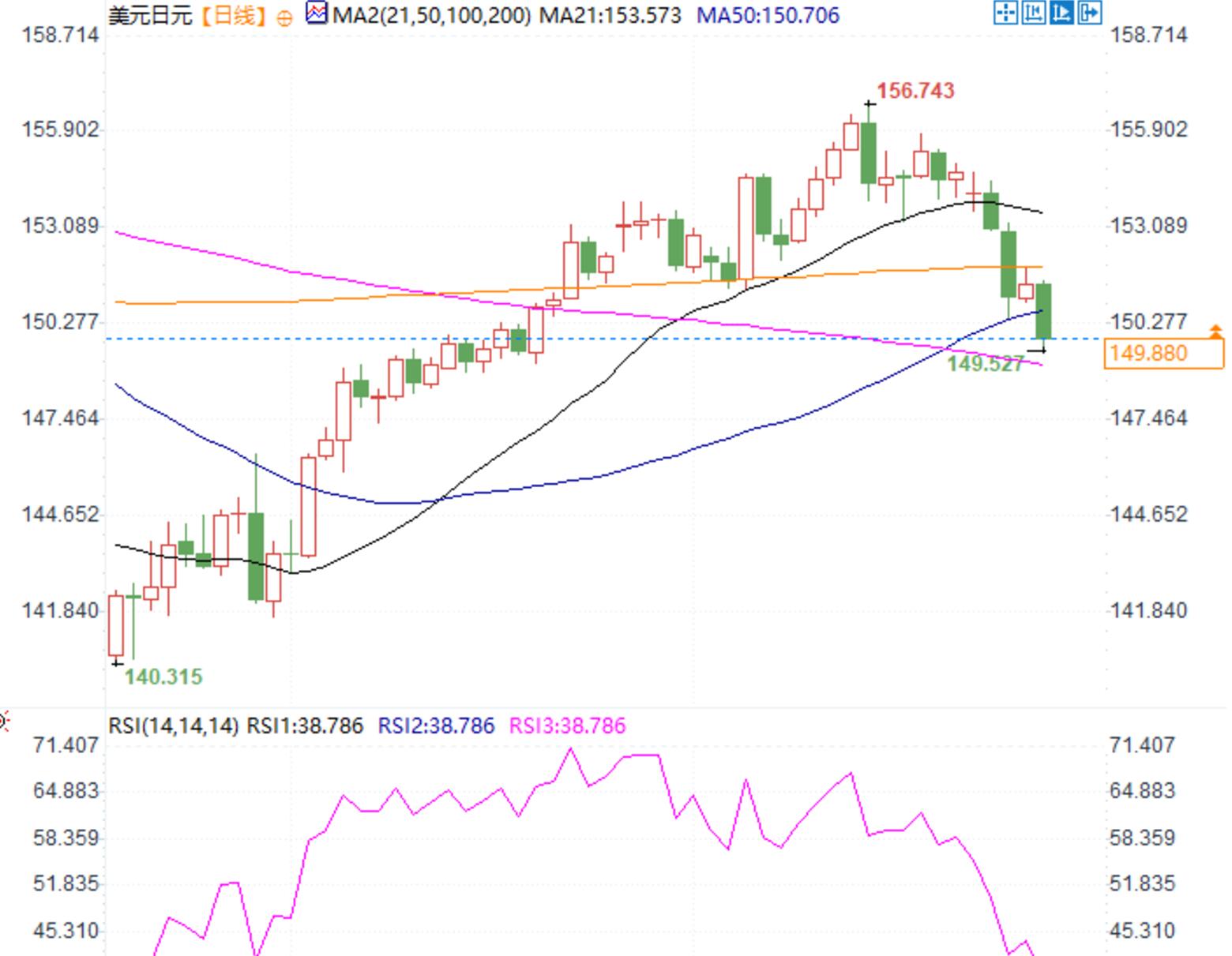
At the same time, EUR/USD traded at 1.0563, up 0.11% for the day and rebounding for four consecutive trading days. The internal divisions within the European Central Bank have intensified, with some officials calling for an increase in interest rate cuts to boost the economy. Despite the euro's cumulative decline of 3% in November, this week's technical correction may reflect the performance of asset reallocation towards the end of the year
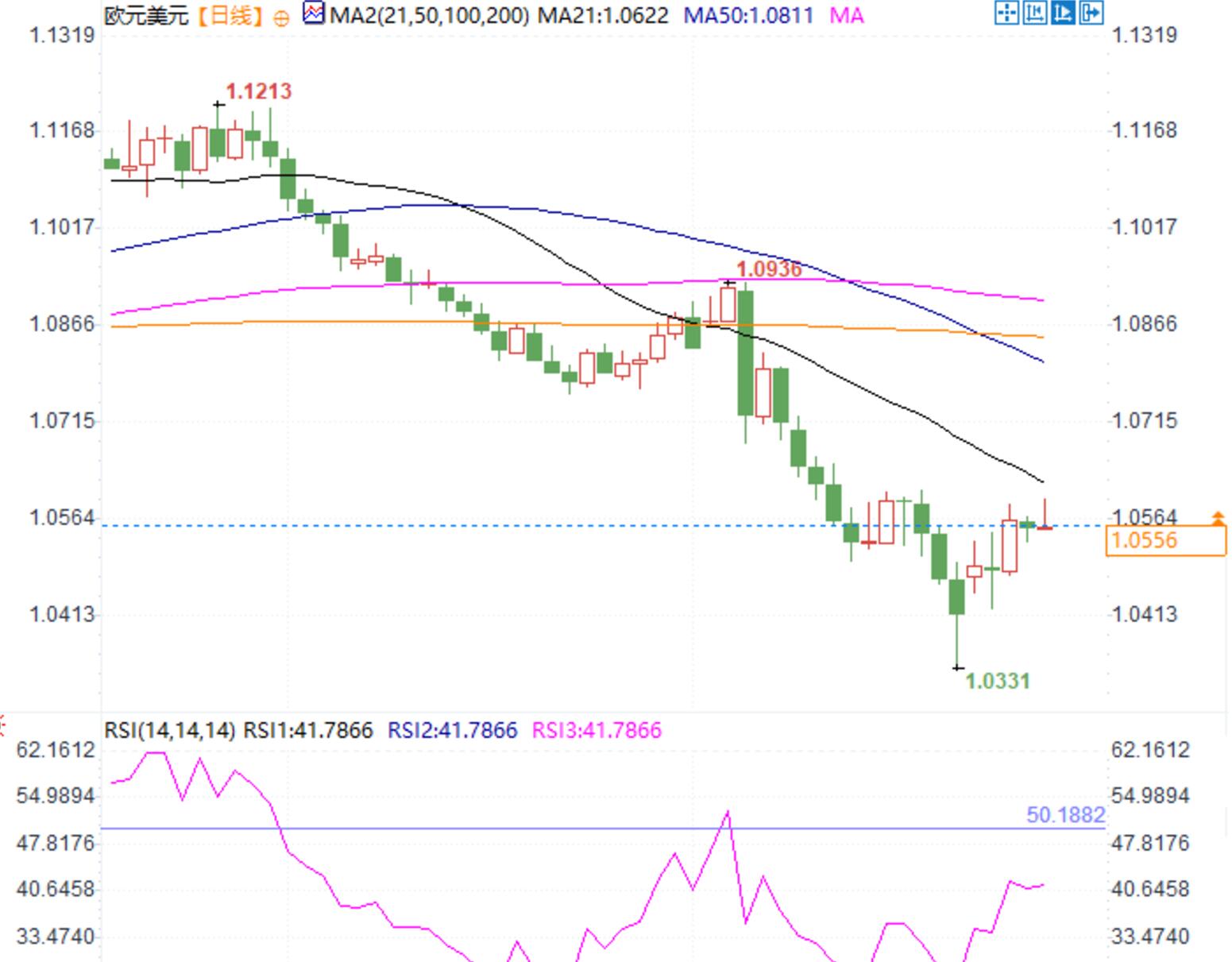
GBP/USD rose slightly by 0.09% to 1.2693, hitting a two-week high of 1.275 earlier. Investors need to pay attention to the latest inflation data in the UK and the potential impact of fiscal policy adjustments.
Looking ahead, the foreign exchange market will continue to be affected by global central bank policy adjustments and investor year-end fund flows, and the US dollar index may remain strong amidst volatility.
Bond market: European bond yields significantly decline
The yield of German 10-year treasury bond fell to an eight week low of 2.12%, which was affected by the expectations of the European Central Bank to cut interest rates and the downturn of the euro zone economy. Despite the November inflation data showing a year-on-year increase of 2.3%, the core inflation rate remains at a high level of 2.7%, and market concerns about long-term economic stagnation are increasing.
In addition, the French government is facing political pressure due to budget disputes, which has undermined market confidence in the overall economic and policy coordination of the eurozone. Renowned analysts have pointed out that the European Central Bank may continue to boost market confidence through interest rate cuts in the future, which could lead to further declines in bond yields.
Outlook: Scarcity of liquidity or intensified volatility
Looking ahead to the evening market, the aftermath of the Thanksgiving holiday is expected to lead to continued sluggish trading volume. The volatility of foreign exchange and bond markets may intensify, especially against the backdrop of asset reallocation at the end of the month. The crude oil market needs to pay attention to changes in supply and demand expectations and related dynamics before the OPEC+meeting, while precious metals may be affected by both the US dollar and safe haven demand.
Overall, the market may be dominated by technical corrections and liquidity changes before the end of the year, with significant short-term volatility. Investors need to carefully monitor the latest developments in major asset classes.
Tips:This page came from Internet, which is not standing for FXCUE opinions of this website.
Statement:Contact us if the content violates the law or your rights
